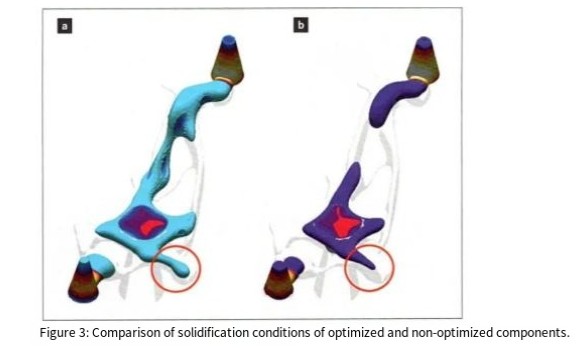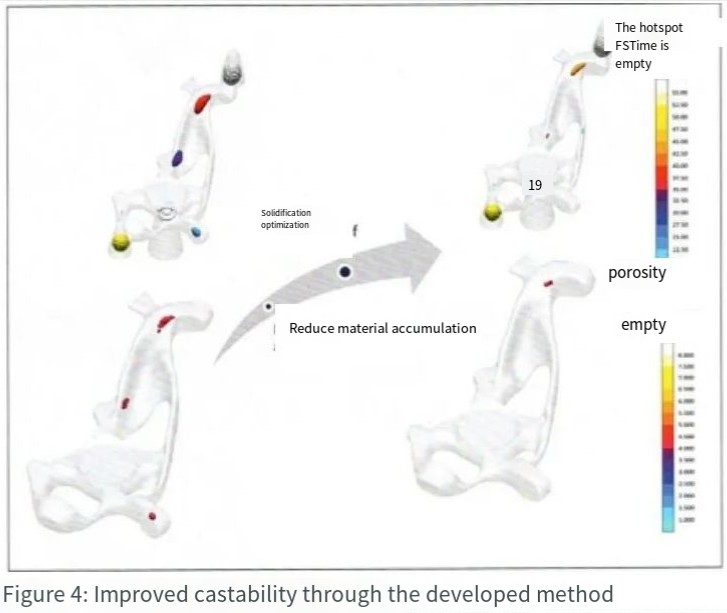
Structural Construction and lightweight Synergy Design
2023-12-18 05:15
Designers and manufacturing experts often have significant disparities in their goals, and this is particularly pronounced in casting technology. Taking the steering knuckle as an example, this article demonstrates the potential of digital component development for developers and businesses.
Designers aim for components with maximum lightweighting and high-strength structures, while casting experts must ensure that components are adequately sequentially filled, optimizing the casting system to be as streamlined as possible and avoiding internal porosity or solidification voids. Achieving a compromise between these goals typically involves multiple rounds of adjustments, lengthening the development process.
Moreover, these adjustments require the application of accumulated professional knowledge over the years. Collaboration between international automotive supplier Elise GmbH and the University of Kassel reveals that utilizing the ELISE software platform can significantly enhance the automation of such development processes.
Adaptive Design Adjustments
The digital interconnection of CAD, topology optimization, R&D analysis, and process simulation tools accelerates the manufacturing process of cast components, a crucial aspect of future efficient product development. Engineers have developed a method using the ELISE software, combining Altair's Altair-Optistruct topology optimization software and Magmasoft GmbH's Magma V5, to find a synergistic and optimized semi-automated design solution (Figure 1). These solutions meet not only the casting production process requirements but also the component structural requirements.

In this scenario, ELSE's digital design functionality is employed to detect and prevent material accumulation during the casting process. Data such as the shape, volume, and position of larger thermal nodes are input into developed functions, where these data are results simulated through topology optimization in Magmasoft. Increasing issues in the production process and subsequent applications within the solidification area can be predicted.
Additionally, material solidification time is used to automatically determine the solidification direction and adjust the affected casting areas. To enhance castability, the ELISE software adaptively thickens the cake and gate into deeper component structures. In the second step, it identifies thermal node paths detected in the solidification direction.
Application Example
In a specific digital study, the front steering knuckle was developed. Topology optimization considered crucial manufacturing parameters such as demolding direction and minimum wall thickness. The optimization was based on three simplified rigid load conditions specifically designed to bear the load of the upper part of the front steering knuckle. Conflicts between rigidity and directional solidification typically occur in the gooseneck region (Figure 2).

After completing topology optimization, smoothing of the part and its transformation back into a castable design were achieved using ELISE. In this scenario, design space limitations were considered, and the computational model adjusted accordingly. The results serve as R&D validation prototypes and blanks for casting simulation, eliminating the time-consuming step of redesigning the topology design structure. Another advantage of this method is the elimination of the need to manufacture new models for each iteration of casting simulation.
Optimization
The above steering knuckle exhibits three significant solidification thermal nodes, with solidification occurring from both sides of the sprue or inner runner. Now, these results are exported from the Magmasoft program at different time steps and further processed using the developed casting optimization method. From here, it is evident how adjustments were made to relevant areas to achieve better directional solidification effects (Figure 3). In the unoptimized component (Figure 3a), the formed solidification area cannot be fed downward, resulting in the formation of a thermal node that leads to porosity. By thickening the steering knuckle during the solidification process (Figure 3b), control was exerted, avoiding the formation of solidification areas, preventing thermal node formation, and reducing or completely avoiding pore generation.

Components optimized in this way can be cast in a simpler, more stable manner. All major thermal nodes are reduced, or even entirely avoided (Figure 4).

The predicted porosity rate resulting from this approach also sees significant improvement. Furthermore, performance analysis even indicates that the component exceeds requirements, meeting three specified rigid load conditions, providing space for weight reduction.
Conclusion
The use of digital design in the development process is the first step towards the automation of casting component development. This technology reduces the manual work traditionally employed by development engineers in common iterations, providing additional freedom for value-added and creative activities. It injects fresh vitality into the engineering and business processes of product development, accelerating the innovation process and strengthening competitive advantages.
Get the latest price? We will reply as soon as possible (within 12 hours)
